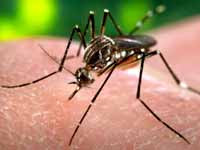
The first death related to the A(H1N1) virus was reported on 23 July, 2009
LETTER by Lim Kit Siang
Why is A (H1N1) death rate in Malaysia four times the global case fatality rate?
Health Minister Datuk Liow Tiong Lai should explain why Malaysia’s A (H1N1) death rate is four times the global case fatality rate.
Malaysia’s death toll from A (H1N1) flu has topped 56 since the first fatality three weeks ago.
The influenza A (H1N1) mortality rate in Malaysia is close to 2% instead of the 0.1% to 0.4% as estimated by the Health Ministry. It reflects an unusual phenomenon. Without finding out the crux of the problem, assuming that 5 million of people are infected, probably 100,000 of them will die, instead of 5,000 to 28,000 as estimated by the World Health Organization (WHO).
Full and satisfactory explanations are warranted from Liow.
Are we prepared for a second H1N1 wave?
Calls for a National Pandemic Flu Service to be set up.
THE government appears to be unprepared for an expected second wave of the Influenza A (H1N1) virus in the coming weeks, say medical experts.
They said the Health Ministry has failed to offer reassurance that health services can deal with the predicted surge, when many could become ill.
They called for clarity on how intensive and critical care departments will cope with high patient numbers.
“We should be concerned about medical staff providing services outside their usual expertise if they are transferred around the country to the areas experiencing most demand,” said an expert, who declined to be named.
He said a National Pandemic Flu Service, similar to the one in England, should be set up to diagnose cases over the phone or Internet and distribute drugs at pharmacies and health centres.
“A national H1N1 helpline should also be set up because the levels of infection are significant. The public should be given assurances that the government can cope with high demand,” he said.
Another medical analyst said she was disappointed that tests to examine how the full range of health services would respond in a pandemic had not been carried out earlier.
“While the government has got some things right in preparing for a flu pandemic, there are other areas where we appear to be underprepared,” she said.
“We were surprised and disappointed that the government had not undertaken ‘whole system’ testing of the health service preparations for a flu pandemic before H1N1 emerged.”
Private doctors, staff also hit by H1N1
KUALA LUMPUR: Influenza A (H1N1) has forced the closure of several private clinics when the doctors or their staff came down with the illness.
Malaysian Medical Association president Dr David K.L. Quek said they were aware of this but had no details.
When told that many doctors do not wear face masks to protect themselves, Dr Quek said this was because patients would feel uncomfortable when doctors covered their faces.




